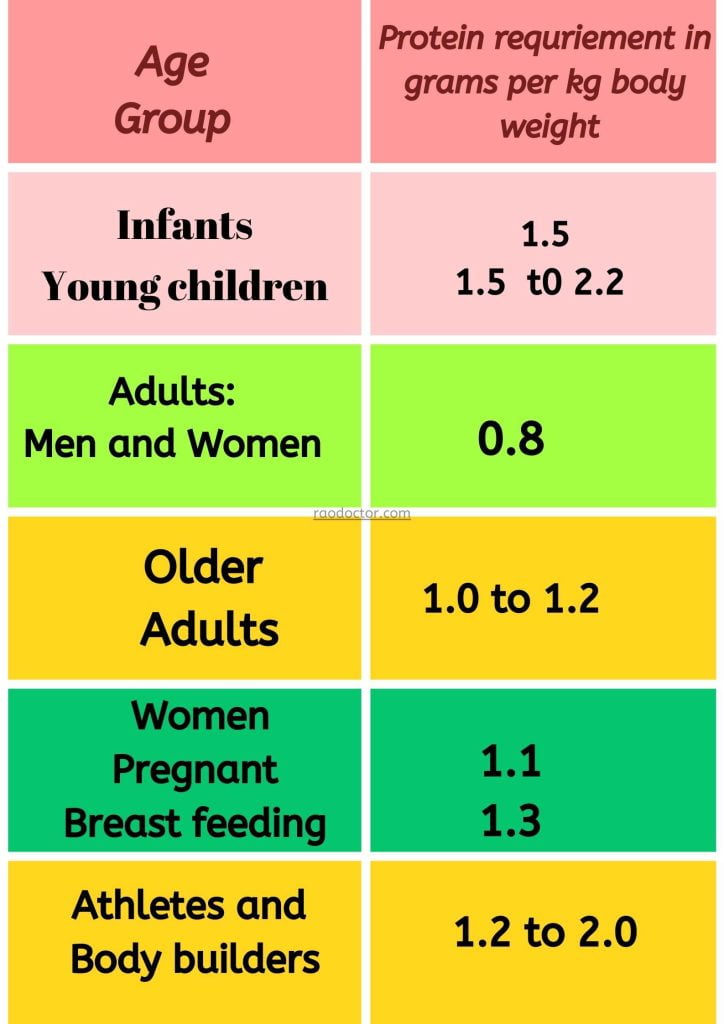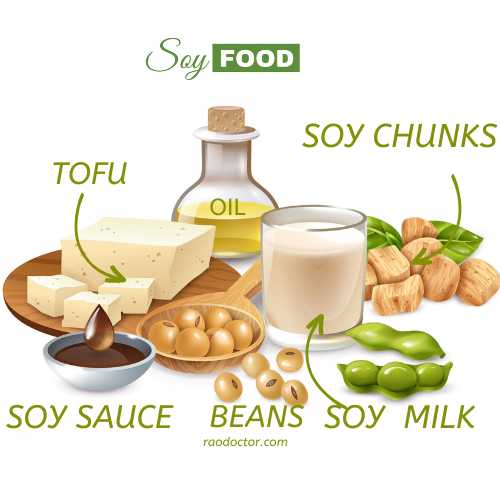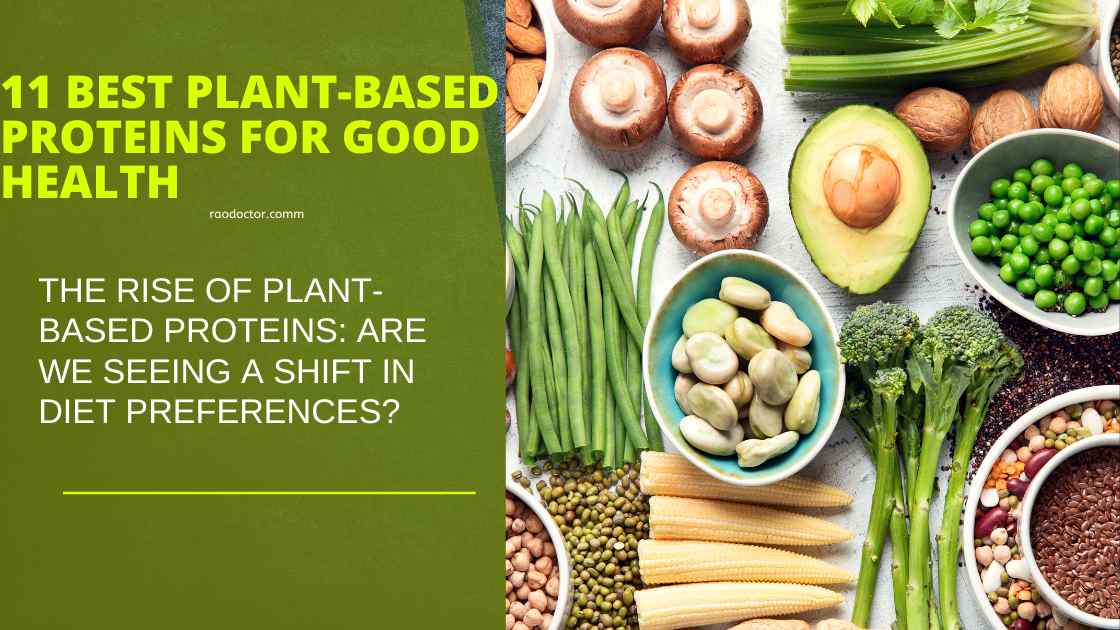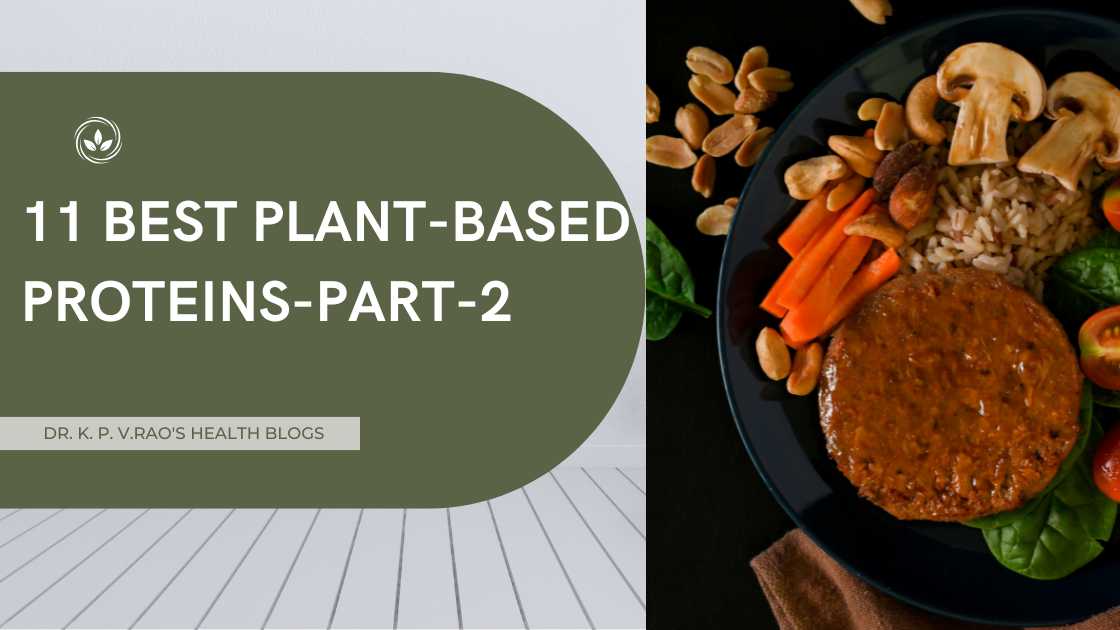Image source-Canva Pro
Table of Contents
The Rise of Plant-Based Proteins: Are We Seeing a Shift in Diet Preferences?
What prompted me to write an article on plant-based proteins?
We all like to have foods that contain a balance of all major nutrients like carbs, protein and fats. Most of us eat foods that contain these ingredients and many of us get our proteins from animal products like eggs, meat, dairy, etc.

But what about those who do not like to include animal products- vegans and vegetarians? Where do they get their daily requirement of proteins from?
Some of my patients who belong to this category always ask me for a source of a plant based high quality protein that led me to do thorough research. And I now place before you all the findings of this research- 11 plant-based proteins.
As the world becomes increasingly health-conscious, plant-based proteins are becoming more and more popular. One of the biggest concerns for those who follow a plant-based diet is getting enough protein.
Luckily, there are plenty of plant-based proteins that can help you meet your daily protein requirements. In this article, we’ll take a look at the 11 best plant-based proteins with their exact value in 100gms.
As a medical and health content writer, I am excited to discuss the benefits of plant-based proteins and why they may be better for your health. Animal proteins have their own drawbacks- they sometimes contain unwanted saturated fats.
Some of the plant-based protein sources like Seitan and tempeh are also new to me. However, while researching various sources of plant proteins beneficial to us humans, I came across these proteins.
In one of my previous articles, I have described all you have to know about Proteins. If you have not ready it before, you can read it now by clicking below-
What is plant-based proteins?
Plant-based proteins are derived from plants, including legumes, nuts, seeds, and grains, and some fruits like avocado, while animal proteins come from animal sources such as meat, eggs, and dairy products.
Having said this, I would now like you to listen to a very interesting podcast on Plant Vs. Animal Proteins by Dr. Greger of Nutrition facts.org before I describe all the plant-based proteins I have come across –
While both types of proteins are essential for our health and well-being, plant-based proteins have been gaining popularity due to their numerous benefits.
One of the most significant benefits of plant-based proteins is that they are easier to digest than animal proteins plus they provide us with many other nutrients that are low in fats and cholesterol and are high in fiber. You will also learn in this article the amount of fibers these plant proteins provide us. According to research, men require about 30 to 38 grams and women 20 to 25 grams of fibers daily.
As this article is quite exhaustive, I have split this article into two parts. In Part 1, I will discuss five of these proteins and six more in Part 2.
Now, before we embark on studying different plant proteins available to us, do you want to know how much protein, either plant or animal, we actually need to eat per day?
The Recommended Daily Allowance [RDA] for proteins
This is important, because having excess proteins has its own drawbacks. Having excess proteins can harm some organs of our body such as the kidneys, the eyes, bones and the brain.
So, here we are- the RDA or the recommended daily allowance of proteins as per your age– have a look at the table shown on the right-

Plant-based proteins contain fiber, which helps slow down the digestion process allowing our bodies to absorb the nutrients more efficiently.
In contrast, animal proteins are often high in fat and cholesterol which can lead to digestive issues and other health problems.
Another benefit of plant-based proteins is that they are lower in saturated fat than animal proteins.
Saturated fat is often associated with an increased risk of heart disease, stroke, and other health problems.
By choosing plant-based proteins, you can reduce your intake of saturated fat and improve your overall health.
Moreover, plant-based proteins are also a great source of essential nutrients such as vitamins, minerals, and antioxidants.
These nutrients are essential for maintaining good health and preventing chronic diseases such as cancer, diabetes, and heart disease.
Should we eat this RDA of proteins in one go?
Now, you may be wondering- the quantity of protein in grams is so little [for e.g., a man or woman weighing 60 kg require only 60×0.8 grams that is 48 grams], how can having excess probably harm you? Well, you see, that proteins are complex structures that are broken into smaller parts in our intestines and transported in the blood as molecules called amino acids.
And these are taken up by various parts of the body to either repair damaged body parts or to make some enzymes or to build our body cells [like muscles in a bodybuilder]. So how do we go about getting our RDA of proteins?
You should have this RDA of protein distributed in proportionate quantity in all your meals and not altogether and not have it in one go.
How does plant protein differ from animal protein?
Animal proteins in contrast to plant ones are often high in calories, cholesterol, and saturated fat, which can lead to weight gain and other health complications.
Plant-based proteins, on the other hand, are more sustainable and environmentally friendly than animal proteins. From improved digestion to a reduced risk of chronic diseases and a more sustainable future, plant-based proteins offer an array of health benefits that cannot be ignored.
Animal agriculture is a major contributor to greenhouse gas emissions, deforestation, and water pollution. By choosing plant-based proteins, you can reduce your carbon footprint and help protect the planet.
In conclusion, there are numerous benefits to choosing plant-based proteins over animal proteins.
So, if you are looking to improve your health and protect the planet, consider incorporating more plant-based proteins into your diet today!
As more and more people are turning towards plant-based diets, the demand for plant-based proteins is on the rise. While there are many protein-rich plant-based foods, some stand out for their high protein content and nutritional value.
Different plant proteins available to us
Now let us learn about all the types of plant proteins available to us. They may differ in their structures, properties and benefits, but having a combination certainly has an edge over animal-based proteins. I will try to include some recipes too to showcase their importance.
Here are the top 10 best plant-based proteins with value in 100gms.
Lentils:
Lentils are a group of food from a variety of pulses. They are available as a whole or may be available as split- polished and unpolished.

Image Source: Canva Pro
Lentils are an excellent source of protein, with 100gms providing on an average around 9gms of protein.
Additional benefits: They are also rich in fiber, iron, and other essential nutrients.
Chickpeas:
Chickpeas are another great source of protein, with 100gms providing around 8gms of protein.
Additional benefits: They are also rich in fiber, folate, and other nutrients.
Quinoa:
Quinoa is one of the few plant-based foods that provide almost all the nine essential amino acids required by our body. 100 grams of quinoa provides around 4 to 4.5 grams of protein.

Image Source: Canva Pro
Quinoa is an excellent alternative to semolina, the traditional ingredient for Indian upma.
Additional benefits: –
Now let us learn what quinoa has to offer for us.
Quinoa is a gluten-free grain that is high in protein, fiber, and various essential nutrients.
A 100-gram serving of cooked quinoa contains approximately:
- Calories: 120
- Protein: 4.4 grams
- Fat: 1.9 grams (mainly unsaturated)
- Carbohydrates: 21.3 grams (13.3 grams of which are complex carbohydrates)
- Fiber: 2.8 grams
- Quinoa is also a good source of minerals such as iron, magnesium, phosphorus, and potassium.
- It is rich in antioxidants, including quercetin and kaempferol, which help to reduce inflammation in the body.
- It is also a good source of vitamins, including vitamin E, vitamin B2 (riboflavin), and folate.
- It is considered a complete protein as it contains all nine essential amino acids that the body needs.
- Quinoa is a versatile grain and can be enjoyed as breakfast porridge, added to salads, used as a substitute for rice or pasta, or even used in baking recipes. Quinoa is a great option for vegetarians, vegans, and those with celiac disease or gluten intolerance.
Example:
A quinoa salad with added vegetables like spinach, bell peppers, and tomatoes can provide a healthy and nutritious meal for those looking to increase their protein and fiber intake. I have written an article previously with a recipe on quinoa. You can read it here-
Read this article to know more about- Health Benefits of Quinoa
Soy Products

Image Source: – Canva
The above image shows different soy products available to us. Out of these, Tofu, Soy chunks, Soy milk and Soy sauce contain plant proteins that are very useful for us. These are great alternatives for meat or animal-based proteins.
In this section, I will talk in detail about all these products. So, let’s begin-
Tofu:
Tofu is an excellent source of protein for vegans and vegetarians derived from soybeans. 100gms of tofu provides around 8gms of protein
Additional benefits:
Nutritional breakdown of 100 grams of firm tofu made from soybeans:

Image Source:- Canva
- Calories: 140
- Protein: 15 grams
- Fat: 2.8 grams (mostly unsaturated)
- Carbohydrates: 4.5 grams
- Fiber: 1.2 grams
- Calcium: 350 mg (35% of the daily value)
- Iron: 1.9 mg (10% of the daily value)
- Magnesium: 38 mg (10% of the daily value)
- Vitamin B1: 0.2 mg (13% of the daily value)
- Vitamin B2: 0.1 mg (8% of the daily value)
- Vitamin B6: 0.1 mg (5% of the daily value)
Here is a short video on preparing a tasty tofu dish-
Tempeh:
Tempeh is a plant-based protein made from fermented soybeans. It is rich in nutrients, such as protein, fiber, vitamins, and minerals. Tempeh originated from Indonesia.
A 100-gram serving of tempeh contains approximately:
- 19 grams of protein
- 8 grams of fiber
- 11 grams of carbohydrates
- 196 calories
- 11% of the recommended daily intake of iron
- 9% of the recommended daily intake of calcium
Tempeh is also a good source of other important nutrients, including:
- Magnesium
- Phosphorus
- Potassium
- Copper
- Manganese
Example: A vegan athlete who is looking for a high-protein and nutrient-dense food can greatly benefit from adding tempeh to their diet. With its high protein, fiber, and iron content, tempeh can provide the necessary nutrients for building and repairing muscles, as well as promoting overall health and wellness.
Additional benefits:
Compared to other soy-based products, tempeh is less processed and retains more of its natural nutrients.
Tempeh is also considered a probiotic food, meaning it contains live bacteria that promote a healthy gut.
Some brands of tempeh may include other ingredients, such as grains or vegetables, which can alter its nutritional profile. It’s important to read the label to ensure you’re getting a high-quality, nutrient-dense product.
Soy Milk
Soy milk is a plant-based milk alternative that is made from soybeans. It is a good source of protein, calcium, and vitamins such as vitamin D and vitamin B12.
One cup of unsweetened soy milk contains approximately 80-100 calories, 4-5g of fat, 8-10g of protein, and 2-3g of carbohydrates.
Soy milk is low in saturated fat and cholesterol, making it a heart-healthy choice.
It is also a good source of phytoestrogen, which may help to reduce the risk of certain types of cancer and relieve symptoms of menopause.
However, some people may have an allergy or intolerance to soy, which can cause digestive issues or other symptoms. Alternately, for those who have lactose intolerance from animal milk, this milk is a good replacement choice.
When choosing soy milk, it is important to look for unsweetened varieties that do not contain added sugars or artificial flavors.
Some popular brands of soy milk include Silk, Alpro, and So Good.
How to use soymilk?
Soy milk can be used in a variety of recipes, including smoothies, coffee drinks, and baked goods. A cup of unsweetened soy milk contains 80 calories, 4g of fat, 8g of protein, 2g of carbohydrates, and 300mg of calcium.
Silk brand offers a variety of soymilk flavors such as vanilla, chocolate, and original.
Soy milk can be used in place of dairy milk in recipes such as creamy soups and sauces.
Soy chunks
Soy chunks are a rich source of protein, with almost 52 grams of protein per 100 grams of soy chunk.
Other than proteins, so chunks have many nutrients that are good for your health-
- They are also low in fat, with only around 1.5 grams of fat per 100 grams of soy chunks.
- Soy chunks are high in fiber, with almost 14 grams of fiber per 100 grams of soy chunks.
- They are also rich in iron, calcium, and other minerals that are essential for a healthy diet.
- Soy chunks are a popular alternative to meat for vegetarians and vegans, as they offer a high protein content without the cholesterol and saturated fat found in meat.
- Soy chunks can be used in a variety of dishes, including stir-fries, curries, and stews, and can be flavored to suit individual tastes.
- Soy chunks are also a versatile ingredient in baking, and can be used to make vegan meatballs, burgers, and other meat substitutes.
- Soy chunks are easy to prepare and can be cooked quickly, making them a convenient choice for busy weekday meals.
- While soy chunks are generally considered safe and nutritious, some people may have allergies or sensitivities to soy, and should avoid consuming them.
- It is important to choose organic and non-GMO soy products to ensure the highest quality and avoid potential health risks associated with genetically modified organisms.
Recipe using soy chunks
A recipe for soy chunk curry could be a great way to incorporate soy chunks into your diet.
Simply sauté onions and garlic in a pan with some oil, then add diced tomatoes and spices like turmeric, cumin, and coriander [use these spices as per your taste and needs]. Add in soaked and squeezed out soy chunks and stir until coated with the spices.
Finally, add some water or coconut milk and salt as per your taste. Cook it on a medium heat and let it simmer until the soy chunks are tender and the curry has thickened.
Serve with rice or naan bread for a delicious meal.
Interesting read: Is Soy Freind or Foe
DISCLOSURE:
Some of the links used in this article are affiliate links. meaning if you make a purchase, I will get a commission, at no extra cost to you. Please be rest assured that I only recommend products I genuinely believe in and use myself, and trust to be good for you too. In this article I have used links to Amazon.com on the products that you can buy in your country using the links given below.
You can buy these products online by clicking the link to your respective country-
Lentils– [India] [UK] [USA] [Canada]
TOFU– [India] [UK] [USA] [Canada]
SOY CHUNKS – [India] [UK] [USA] [Canada]
Final Words
Here I come to the end of Part 1 of Plant-based proteins. I will post Part 2 of this series shortly. If you have found this article useful, do share it on various social icons you see at the bottom of this article. Alternately, you can Click to Tweet-
11 Best Plant-Based Proteins for good health-Part 1 Share on XAs said earlier, my next article will be on the remaining six plant-based proteins. Do subscribe to my blog to get the latest informative article in your inbox in future.
Adios.


